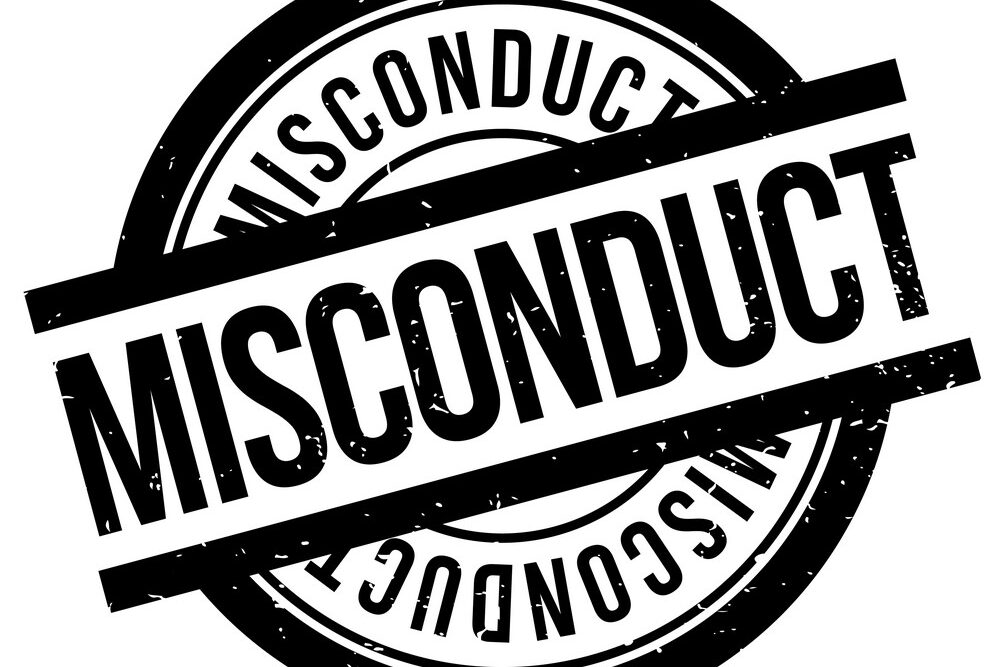29 Examples of Teacher Misconduct
In an ideal world, every classroom would be a safe, nurturing environment for learning. Regrettably, instances of teacher misconduct do occur, potentially damaging students’ education and wellbeing. This blog post aims to elucidate what constitutes teacher misconduct by providing concrete examples, while also offering guidance on addressing such scenarios.

Defining Teacher Misconduct
Teacher misconduct refers to inappropriate behavior by an educator that contravenes the professional and ethical standards expected of them. It may be directed towards students, parents, other staff members, or the institution at large.
Examples of Teacher Misconduct
- Inappropriate Touching: A teacher hugs a student too often or in a manner that makes the student uncomfortable.
- Sexual Comments: A teacher makes comments about a student’s physical appearance or sexual development.
- Discrimination: A teacher treats a student differently or makes offensive remarks based on race, religion, gender, or sexual orientation.
- Bullying: A teacher belittles, threatens, or humiliates a student in front of the class.
- Favoritism: A teacher consistently gives preferential treatment to certain students over others, affecting grades or opportunities.
- Neglect: A teacher fails to address bullying incidents in the classroom, leading to a hostile environment.
- Grading Inconsistencies: A teacher unfairly grades students or alters grades without justification.
- Alcohol or Drug Use: A teacher comes to school under the influence of alcohol or drugs, impacting their ability to teach effectively.
- Invasion of Privacy: A teacher reads a student’s private notes or messages without consent.
- Inadequate Supervision: A teacher leaves students unattended during a potentially hazardous activity, like a science lab or a field trip.
- Conflicts of Interest: A teacher employs students for personal gain, such as using them for free labor.
- False Accusations: A teacher wrongly accuses a student of cheating or other misconduct without evidence.
- Teaching Outside Curriculum: A teacher persistently teaches topics that are not part of the approved curriculum.
- Inappropriate Relationships: A teacher forms a personal or romantic relationship with a student.
- Sharing Inappropriate Material: A teacher shows movies, images, or discusses topics that are inappropriate for the student’s age or the classroom setting.
- Personal Bias: A teacher allows personal beliefs or attitudes to influence their treatment of students.
- Overly Harsh Discipline: A teacher uses punishment methods that are disproportional to the student’s misbehavior.
- Breach of Confidentiality: A teacher discusses a student’s grades, behavior, or personal issues with other students.
- Inadequate Lesson Planning: A teacher consistently fails to prepare or deliver effective lessons, leading to substandard education.
- Forcing Personal Beliefs: A teacher imposes their political, religious, or other personal beliefs on students.
- Inappropriate Communication: A teacher communicates with a student through personal social media platforms or shares personal contact details without a valid reason.
- Intimidation Tactics: A teacher uses scare tactics to control the class or to force students to comply.
- Abuse of Authority: A teacher uses their position of power to exploit or manipulate students.
- Refusal to Adapt: A teacher refuses to accommodate a student’s learning needs, such as those related to a disability.
- Unprofessional Language: A teacher uses curse words, slang, or inappropriate language in the classroom.
- Fraud: A teacher lies about their qualifications or fakes school records.
- Theft: A teacher steals property from students, colleagues, or the school.
- Lack of Respect for Boundaries: A teacher insists on discussing personal matters with students despite their discomfort.
- Inappropriate Attire: A teacher wears clothing that is not suitable for a school setting, such as overly revealing attire.
More Examples of Teacher Misconduct are coming soon…
Addressing Teacher Misconduct
When faced with potential teacher misconduct, it’s crucial to respond appropriately and promptly to ensure student safety and the integrity of the educational institution.
Document the Incidents
Record dates, times, details of the incidents, and any witnesses. This information is vital when reporting the misconduct.
Report to the Appropriate Authority
Depending on the situation, this might be the school principal, the school board, or in severe cases, local law enforcement.
Support the Affected Student
Provide emotional support and reassurance to the student affected. Encourage them to speak about their feelings and experiences.
People Also Ask
What Are the Consequences of Teacher Misconduct?
Consequences can range from reprimands, suspensions, job termination, to legal repercussions in severe cases.
What Should a Parent Do If They Suspect Teacher Misconduct?
Parents should document suspected misconduct incidents, then report their concerns to the school’s administration or appropriate authority.
How Can Schools Prevent Teacher Misconduct?
Schools can implement stringent hiring practices, provide regular professional development training, and establish clear reporting and disciplinary procedures.
Conclusion
Understanding and recognizing teacher misconduct is crucial in maintaining safe, supportive learning environments. Through awareness and appropriate response mechanisms, schools and parents can protect students from potential harm and uphold the standards of education.
- See also: 26 Examples of Gross Misconduct